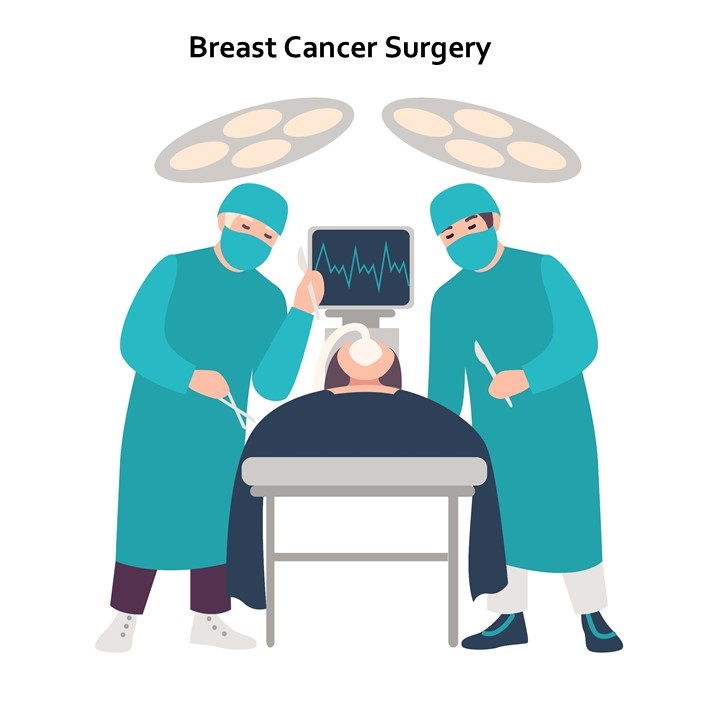Phone Appointment
[smartblock id=45]WhatsApp Appointment
[smartblock id=46]June 2020

Most women with breast cancer have some type of surgery as part of their treatment. There are different types of breast surgery. Your doctor may recommend an appropriate operation based on the size and stage of your cancer, your other treatment options, and your goals and preferences.
Breast cancer surgery includes different procedures, such as:
- Surgery to remove the entire breast (mastectomy)
- Surgery to remove a portion of the breast tissue (lumpectomy)
- Surgery to remove nearby lymph nodes
- Surgery to reconstruct a breast after mastectomy
Surgery to Remove Breast Cancer
There are two main types of surgery to remove breast cancer:
- Breast Conserving Surgery (also called a lumpectomy, wide local excision) is a surgery in which only the part of the breast containing the cancer is removed. The goal is to remove the cancer as well as some surrounding normal tissue. How much breast is removed depends on where and how big the tumour is, as well as other factors.
- Mastectomy is a surgery in which the entire breast is removed, including all of the breast tissue and sometimes other nearby tissues. There are several different types of mastectomies. Some women may also get a double mastectomy, in which both breasts are removed.
Breast Conserving Surgery for Breast Cancer
For many years, mastectomy or removal of the whole breast was deemed as necessary in order to cure breast cancer.
However, we now have over 40 years of strong supporting evidence that a lumpectomy, i.e. removing the tumour together with a margin of healthy breast tissue, is at least as effective as a mastectomy. Women with early-stage cancers can choose between breast conserving surgery (BCS) and mastectomy.
The advantages of BCS are:
- aims to keep most of the breast tissue
- is less of a change to your body than mastectomy
- has a recovery time of a few weeks
Surgery to Remove Nearby Lymph Nodes
Cancer surgery involves not only the complete removing of the tumour, but also removal of the surrounding lymph nodes. This is because cancer can spread via the lymphatic system to these lymph nodes. The two main types of surgery to remove lymph nodes are:
- Sentinel lymph node biopsy (SLNB) is a procedure in which the surgeon removes only the lymph node(s) under the arm where the cancer would likely spread first. Removing only one or a few lymph nodes lowers the risk of side effects from the surgery, such as arm swelling that is also known as lymphedema.
- Axillary clearance is a procedure in which the surgeon removes many (usually less than 20) underarm lymph nodes. Axillary clearance is needed because the lymph nodes are found to have cancer cells. Side effects from the surgery include shoulder stiffness, swelling of the arm (lymphoedema), numbness of the inner part of the upper arm.
Surgery to Reconstruct a Breast after Mastectomy
Many women having surgery for breast cancer might have the option of breast reconstruction. A woman having a mastectomy might want to consider having the breast mound rebuilt to restore the breast’s appearance after surgery. In some breast-conserving surgeries, a woman may consider having fat grafted into the affected breast to correct any dimples left from the surgery. The options will depend on each woman’s situation.
There are several types of reconstructive surgery, but your options may depend on your medical situation and personal preferences. You may have a choice between having breast reconstruction at the same time as the breast cancer surgery (immediate reconstruction) or at a later time (delayed reconstruction).
If you are thinking about having reconstructive surgery, it’s a good idea to discuss it with your breast surgeon and a plastic surgeon before your mastectomy or BCS. This gives the surgical team time to plan out the treatment options that might be best for you.
